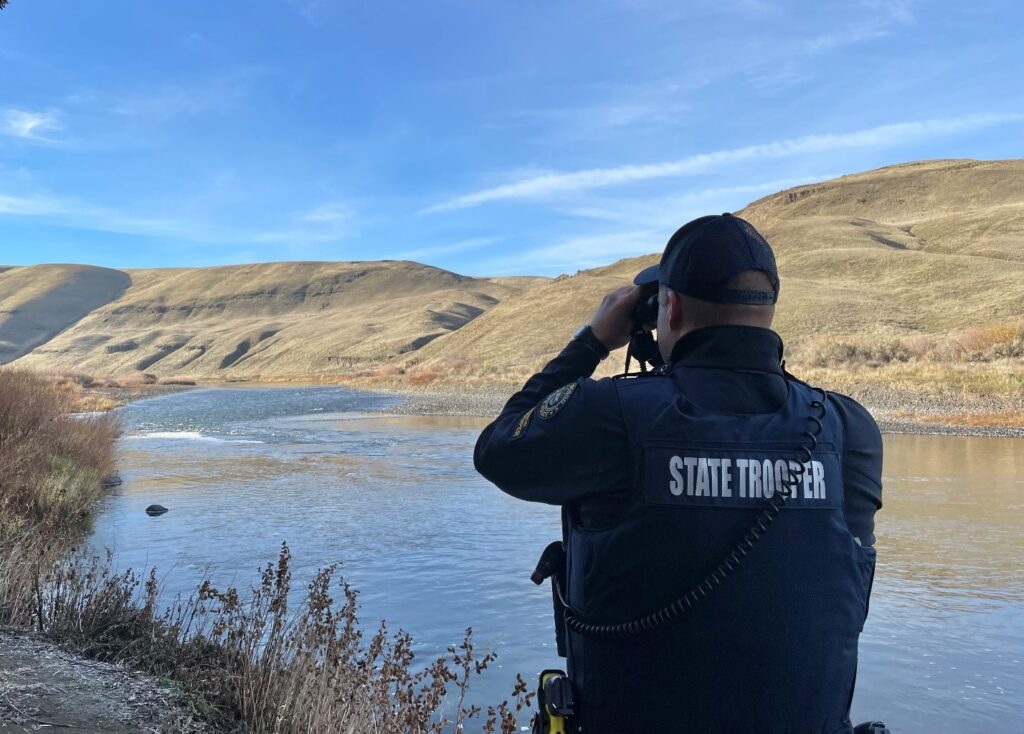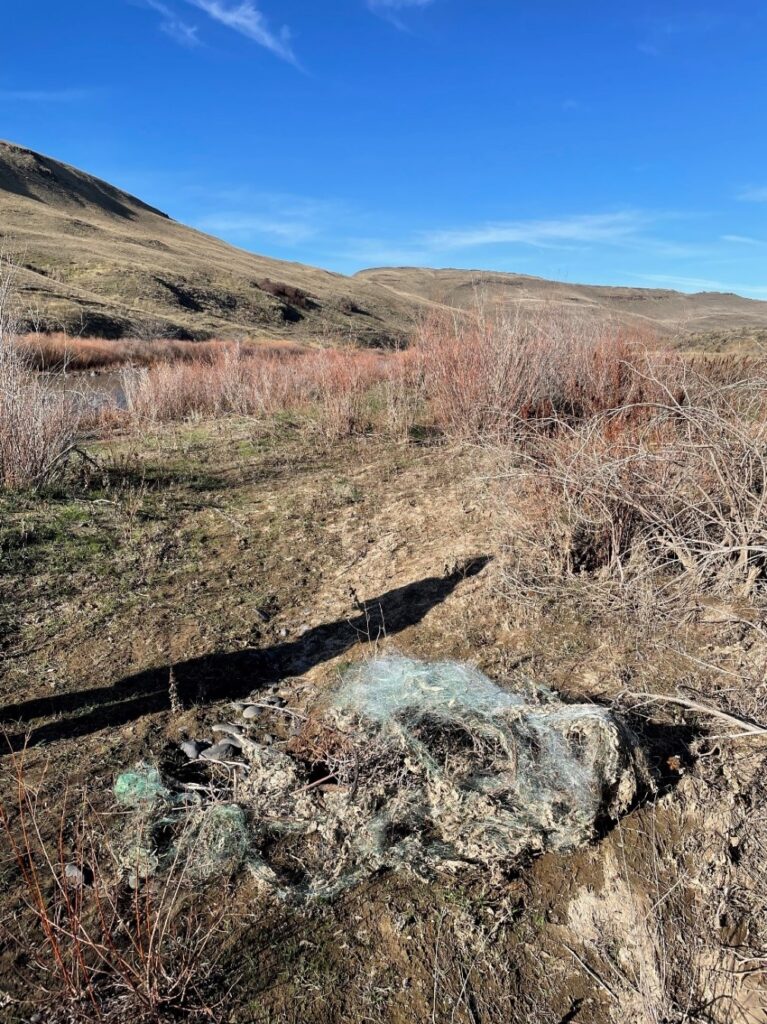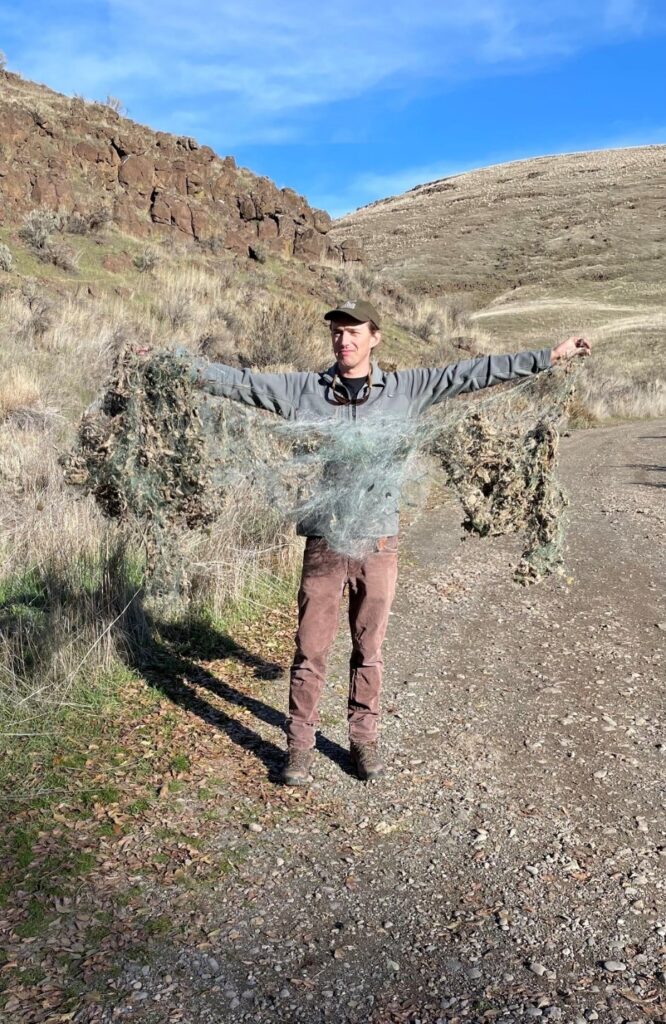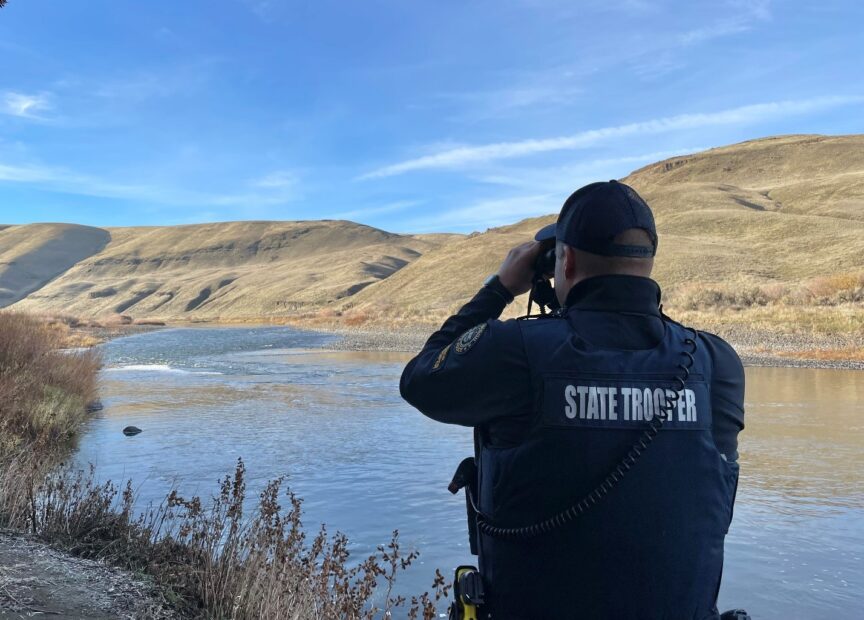
TU’s Oregon Policy Advisor spends a day with Oregon State Police
In the Columbia Basin, Oregon State Police’s Fish & Wildlife Division plays a key role in conserving wild steelhead. Last month, Wild Steelheaders United had an opportunity to ride along for a day on the John Day River. Some fish were caught by anglers, and some citations were issued by OSP, but perhaps most importantly, the experience drives home the importance of fully funding law enforcement programs that protect America’s natural resources.
LAY OF THE LAND
Unlike nearly every other state, Oregon Department of Fish & Wildlife (ODFW) does not have “game wardens” housed within the state natural resource agency. Instead, Oregon and Alaska are the only two states where the state police force is responsible for enforcing the fish and wildlife rules. Accordingly, Oregon State Police (OSP) enforces the angling regulations in Oregon, and angler encounters with law enforcement involve OSP Troopers, not ODFW game wardens.
The state’s fishing rules (such as licensing requirements, gear restrictions, harvest limits, etc.) provide conservation benefits to native trout, salmon, and steelhead only to the extent that anglers follow the rules. In other words: a regulation is only as good as its voluntary compliance plus enforcement. If a stream is closed to fishing, or harvest is limited to one fish per day, someone must be responsible for overseeing the public’s compliance with those restrictions, and correcting offenses.
Some folks are well-educated on licensing and regulation requirements and vigilantly comply on a consistent basis. Many others (including those new to fishing) need education before going afield or while out on the river. This can range from informal conversation between anglers about the importance of checking regulations, to polite warnings from Troopers to anglers. Of course, sometimes it may also take the sting of monetary fines or jail sentences to cause a change in behavior.
A DAY ON THE RIVER
Last month, Wild Steelheaders United had the opportunity to join OSP for a day of patrolling the John Day River canyon, based out of The Dalles office.
There’s a somewhat predictable seasonality to the work of an OSP Trooper. Officers head out to the big game winter ranges each spring to enforce closures that protect vulnerable elk and deer, then on to the big waters of the Columbia checking harvest and gear limits during the summer recreational salmon fisheries, and then up the Columbia tributaries for summer and fall steelhead fisheries (with many other places and emergencies in between!).
In the fall, summer steelhead migrating up the Columbia River may stop over for a period in tributaries before continuing onward to streams further east such as the Grande Ronde and Clearwater. However, in the John Day watershed, nearly all summer steelhead are homing in on spawning gravels in the John Day watershed itself, headed to small streams in places such as the Strawberry Mountain Wilderness. The opportunity to encounter these beautiful, strong, and wild fish in a remote area draws steelhead anglers from around the region—and the world. Many anglers dutifully comply with applicable regulations, but Troopers also regularly observe illegal activity such as snagging, fishing at night, and harvest in closed areas or on closed fisheries.

We drove dusty backroads, waved to each passing pickup truck, and scanned a lot of country with binoculars. We met nice people out enjoying the public land, and heard of a few nice wild steelhead being caught, too.
OSP Troopers use a variety of tactics to observe, surveil, and engage with folks in the field, ranging from talking with people in the parking lot to nighttime observation missions in known poaching areas. During our visit, we mostly walked angler trails and stopped through recreation areas to check anglers for proper licensing and compliance with harvest requirements.
A surprising percentage of folks were not fully licensed, or had purchased licenses but didn’t have the licenses in their possession. In fact, more than half of the people that OSP encountered over the day received a citation of some sort. This serves as an important reminder: when angling for steelhead in the Columbia basin in Oregon—even if just catch and release—one must have a fishing license, combined angling tag (on which to enter harvested fish records), and a Columbia River Basin Endorsement in possession while fishing. While not necessarily a major conservation concern for steelhead populations, it was a good reminder that screenshots of licenses don’t cut it; have the full suite of paper or e-tag licenses on your person whenever fishing or risk a ticket!
Unfortunately, we also found evidence of illegal activity that can significantly harm wild steelhead populations. While hiking downriver at one popular access point, we found an unlawful and abandoned gillnet tangled in the riparian willows (quite a few miles upstream of the Columbia). It’s difficult to say when and where this net had been used because it appeared to have been washed into the bushes by high flows in spring 2023. Judging by the relatively good shape of the monofilament and overall length of the net, though, it’s reasonable to assume that this net spanned a significant portion of the channel, or the full portion of one of its braided side channels, sometime in 2022. The number of wild spring chinook, wild summer steelhead, and other native fish that died in it is a mystery unlikely to be solved. We packed the net out for disposal in a landfill; a tangible improvement to the landscape for the day.

THE TAKEHOME
Poachers don’t get caught unless we as a society of anglers and conservationists prioritize having well-equipped State Troopers in the field looking out for the state’s fish and wildlife. This means anglers, advocates, and elected officials must provide sufficient support to OSP’s Fish & Wildlife Division (or whatever the equivalent agency is in your state) to staff Trooper positions, purchase and maintain equipment such as trucks and boats, and stay current with advances in technology.
As specialized equipment becomes more affordable, user-friendly, and smaller in size, it’s important to continually improve the technological capabilities of game wardens and OSP Troopers. For example, high quality night-vision optics (e.g., for protecting against poaching at known low-water holding pools for salmon) and image-stabilizing binoculars (e.g., for monitoring and enforcement out on the waves of the Columbia River) are widely available; our fish and wildlife enforcement officers should have ready access to them.
Wild Steelheaders has supported the technology and capacity needs of law enforcement agencies that protect wild steelhead in the past, and we will continue to do so.

Many thanks to the Troopers for having us along… and a friendly reminder to have your appropriate licenses, harvest cards, and endorsements in possession when fishing this winter! If you’d like to learn more about OSP’s Fish and Wildlife Division, we recommend checking out their monthly newsletters that document law enforcement activities that help to protect and conserve the region’s fish and wildlife resources.
James Fraser is the Oregon Policy Advisor at Trout Unlimited.


